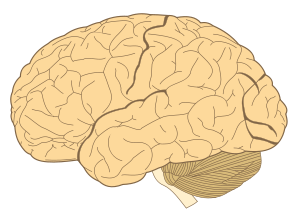
One of the questions companies often want to know is, how much does it cost to produce customised training videos?
 Picture Alert: Inappropriate visual. Example of how bad it is to put the wrong visuals with your content. It doesn't matter if the picture is nice or funny.
Picture Alert: Inappropriate visual. Example of how bad it is to put the wrong visuals with your content. It doesn't matter if the picture is nice or funny.
Research suggests that learners more easily understand and recall new material presented in video that allow participants to both hear and see the information (Gunter, et al. 2000; Molen, et al. 2000; Lalley 1998).
This dual-encoding process reinforces information in multiple brain areas, thereby increasing the chances that the material will be stored in long-term memory.
In fact, I'd go as far as saying that video has a triple-encoding process. An expertly produced training video, will get people to read, see and hear information resulting in recall levels of 60% (as opposed to reading which is 10%).
Video is extremely powerful at communicating messages and helping people to remember them. And that is why I love them!
But, not all training videos are created equal. To make the most of the dual-encoding process (uh herm, triple-encoding)- in the brain, there are certain attributes that the video must have, in order to store information in long term memory.
Here are some important training video tips:
1. Match the visuals, titles and voiceover - This is a common mistake of amateurs. Sadly, even some experienced editors have difficulty with this one. This is one of the reasons why training videos are so powerful, but so many production houses get it wrong. Remember, don't skimp on editing time. It is worth the time and effort to use lots of titles and to match the vision accurately.
2. Focus the training video on instructional design principles. Producing a training video is more than just editing and filming. The script must be written in a way so as to enhance learning. Avoid working with directors whose main desire is to be a Hollywood producer. While you are getting a training video made, remember it is just another communication tool like a poster magazine ad. It is not about amazing pictures with stereophonic sound. How it is put together is a necessary requirement, but it is the instructional design principles behind it that make all the difference.
3. Entertaining videos usually don't work. Avoid effects that do not add to communicating your message. Do you really need the paint splash effect title when your company has nothing to do with paint?
4. Change what's on screen every 5-7 seconds. Use a variety of communication methods - titles, different voiceovers, numerous camera perspectives and a change in music. Keep people engaged.
5. Show people as much as you can. People like looking at people. Again, amateurs don't get this key principle. I have seen amateur videos where a blank wall has been an unnecessary feature point while the narrator rambled on. No joke.
6. Linear sequence (Step 1, Step 2 etc) avoid Step 2, Step 1, Step 2, Step 3, Step 5 etc). Our conscious brain absorbs information in a linear fashion. Information must always be given from start to end with no confusing jumping back and forth. With any type of training the structure is crucial to success. This is the same with an educational video. In a video, it can be quite boring and annoying to see things twice or in the wrong order. Makes it difficult to understand.
7. Script - This is crucial. It must be friendly and conversational. Use short words and sentences. This is not a time to make out your clever because you know some big words. And don't get lazy and refer people to a book (yes, some training videos do that!)
8. Segregate the training video into chapters and make these clear. Just like a book, structure the training video into a range of titles and subtitles and make these easy to skip to. By using titles in the video on the next topic, it helps to focus viewers on what they are going to learn next.
Training videos are an incredibly effective method of training people quickly and thoroughly. More importantly, they help viewers to retain the information much more than if they were to read the information or even hear it. But they have to be made right. By spring boarding off what makes training videos so great and including these components in you training video, you'll get fantastic training outcomes.

One of the questions companies often want to know is, how much does it cost to produce customised training videos?

To get trainees to remember new information, you need to get the information to encode into the brain.